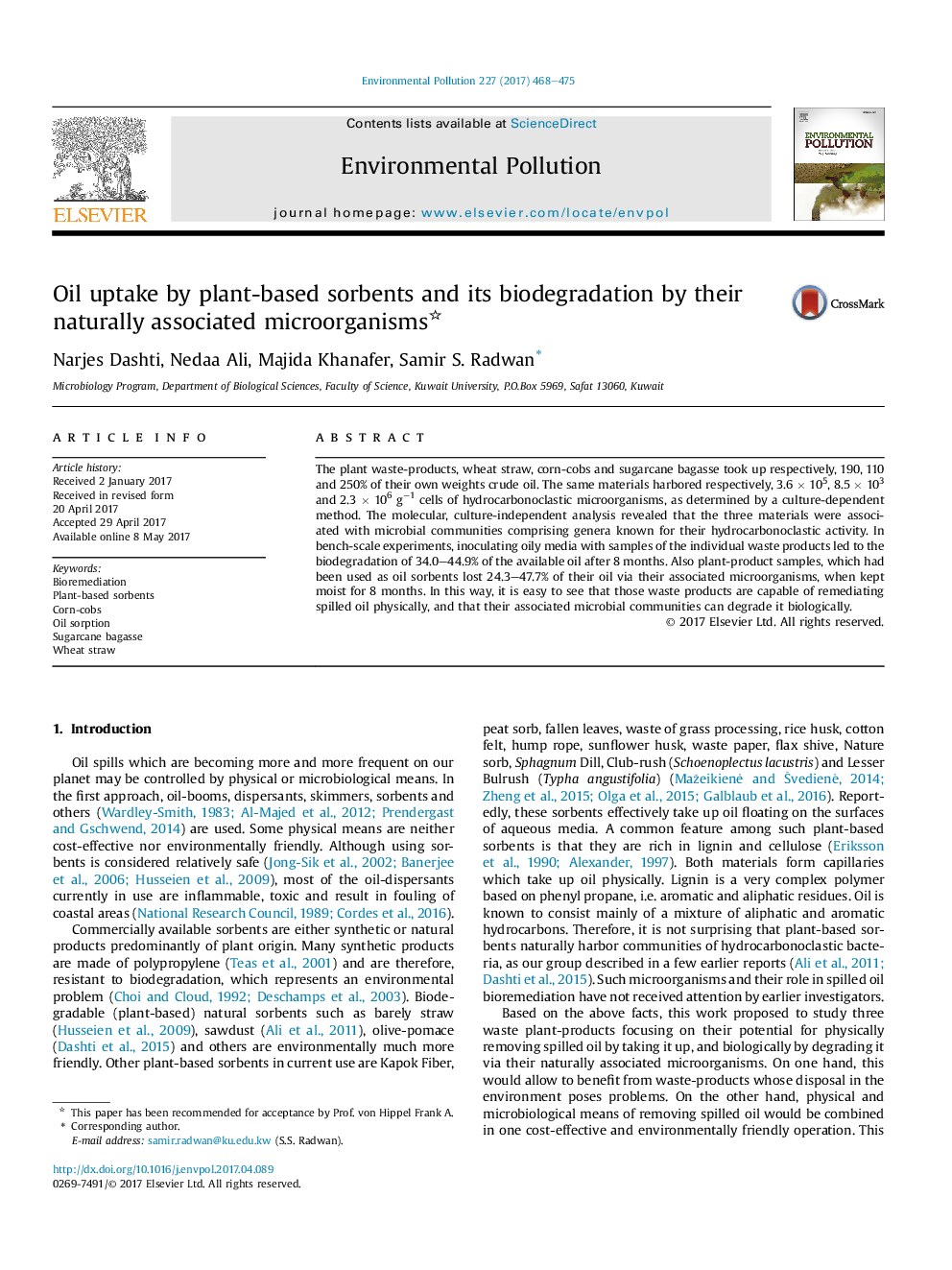| Article ID | Journal | Published Year | Pages | File Type |
|---|---|---|---|---|
| 5749169 | Environmental Pollution | 2017 | 8 Pages |
â¢Wheat straw, corn-cobs and sugarcane bagasse take up large amounts of oil.â¢The three materials harbor hydrocarbonoclastic microorganisms.â¢Inoculating oily liquid media with the three materials separately led to biodegradation of oil.
The plant waste-products, wheat straw, corn-cobs and sugarcane bagasse took up respectively, 190, 110 and 250% of their own weights crude oil. The same materials harbored respectively, 3.6Â ÃÂ 105, 8.5Â ÃÂ 103 and 2.3Â ÃÂ 106Â gâ1Â cells of hydrocarbonoclastic microorganisms, as determined by a culture-dependent method. The molecular, culture-independent analysis revealed that the three materials were associated with microbial communities comprising genera known for their hydrocarbonoclastic activity. In bench-scale experiments, inoculating oily media with samples of the individual waste products led to the biodegradation of 34.0-44.9% of the available oil after 8 months. Also plant-product samples, which had been used as oil sorbents lost 24.3-47.7% of their oil via their associated microorganisms, when kept moist for 8 months. In this way, it is easy to see that those waste products are capable of remediating spilled oil physically, and that their associated microbial communities can degrade it biologically.
Graphical abstractDownload high-res image (241KB)Download full-size image
